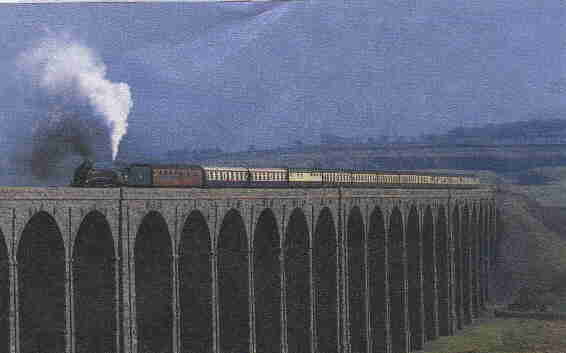In Memory of Tony Ireson
Need you ask so many questions?" I remember the White Rabbit asking Alice. With
the curiosity and inquisitiveness of a child came the regular flow of questions from Tony,
yet, as behind Alice, was a very intelligent author. I'm sure this curiosity in Tony was
something, like his impish charm, he was born with. His family had been stonemasons and
carvers for several generations, and men working with craftsman's skill and natural
products - usually stone - was Tony's childhood background. His cousin was Archie Ireson.
Having reached 88 years, he could look back over a lifetime of change. Being taken as a
child by the family horse and cart had been a pleasure particularly if given the chance to
hold the reigns. Lately he was a proud Triumph car owner. As a journalist he would now be
an email man.
It's not hard to see how this early upbringing developed in with a love of the
countryside and carefully crafted buildings set in it. Having been educated locally and
worked locally, he never really wanted to leave Kettering even though he spoke with some
fondness of India.
As with a journalist, my link back to Alice, has a more serious side. Tony's questions
were always searching for answers, put in an intelligent way, with thought behind them but
never a vicious or scandalous edge. Where he considered he might be personally hurtful, he
left things unsaid. I like to think this was the Christian side of Tony.
In 1954 he wrote his first published book 'Northamptonshire History' which was to
become a best seller. With an ear for local phrases and expressions, he picked up and
incorporated the way Northamptonshire people were, into his writing. Photographic
illustrations were his also.
From the Civic Society, we remember him as a founder member. The Town will remember
Tony's Civic Society work in connection with Kettering Town Centre Redevelopment and
particularly the saving of Beech Cottage, which now stands as a memorial to him and a
reminder to the town of how things were. It is now a Gallery of his father's paintings.
All towns grow and evolve and it was his caring side of this evolution of Kettering
with which. Tony associated himself.
It was his `Care Quality' for which I think everyone respected him. There was always a
sense of humour with what he said and did. During the Build-up to Kettering entering the
Redevelopment Epidemic of the 1970's local politicians held meetings to win converts to
their cause. At one of these meetings, Tony was to display his impish side.
Chaired by Councillor Barry Chambers, a full meeting, mostly of politically minded
folk, was joined at the back of the audience by Tony and a fellow Civic Society member.
Heads turned, people murmured, and the chairman looked pensively and then launched into
reasons why Kettering Town Centre should best be blitzed and rebuilt.
Tony proceeded to noisily unzip his briefcase and took out a clipboard and at the top
of the sheet of paper wrote a short sentence. In front of Tony sat Alderman Len Smith.
Tony tapped his shoulder and passed the clipboard to him. "Sign that please"...
Len did and Tony urged with a dramatic whisper "Pass it on..." Gradually the
board went round the whole seated audience who one by one signed the petition before it
eventually came back to Tony. At this point, the other Civic Society member was able to
read the petition, which read... `SAVE THE WHALES'.
The Chairman didn't know what had so broken the concentration of the audience but in a
move, which Gatling Fen himself would have been proud of, Tony's impishness was well
demonstrated and the meeting deflated.
Tony took early retirement to devote more time to opposing the development of the
Newlands Centre eventually saving Beech Cottage, which I guess everyone will now try to
save. What an irony.... Arrangements were made during the 70's for his cottage and we wait
enthusiastically to learn what Tony had in mind. Tony devoted much of his time to writing
and at the time of his death, he was nearing the completion of his 8th book.
Civic matters always remained in his mind and he was a regular behind the scenes,
worker and mentor. Lately it was the Civic Society secretary who called on him regularly
to bring his thoughts back to our meetings.
Tony has left us with memories of a charming intelligent, innocent man whose care for
the world around him has left us a model in society to look up to and a conscience to
protect and care for what is good.
The Civic Society and The Town say `Goodbye' to one of it's GREATEST DEFENDERS,
Tony Ireson 1913 - 2002
For more information about the Tony Ireson Story follow this
link
Auction held at The Alfred East Gallery Kettering Saturday 6th July 2002
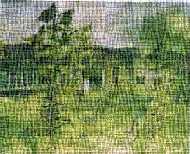 In accordance with Tony's wishes a sale by auction of his paintings, some 250 works by
his father Christopher Ireson1883-1925, and other artists, was held on Saturday 6th July.
Members of the committee considered it a fitting tribute to purchase a painting in
remembrance of Tony and a successful bid of £420 was made for the picture (right)
Beech Cottage Garden (5th June 1974) by Nina
Carroll In accordance with Tony's wishes a sale by auction of his paintings, some 250 works by
his father Christopher Ireson1883-1925, and other artists, was held on Saturday 6th July.
Members of the committee considered it a fitting tribute to purchase a painting in
remembrance of Tony and a successful bid of £420 was made for the picture (right)
Beech Cottage Garden (5th June 1974) by Nina
Carroll
The money from the whole sale (£18,800) was donated, at Tony's wish, to Kettering
General Hospital League of Friends. A better choice could not have been made, one that
would also honour the memory of Nina Carroll the artist and a good friend and founder
member of the Society. Members of the Society have been presented with a photograph of the
painting with thanks to the generosity of Kate Steane, daughter of Nina, who has granted
us the copyright. We now look forward to exhibiting our painting and for Kate to bring an
exhibition of Nina Carroll's paintings to Kettering.
........... ~ ............ |


 In accordance with Tony's wishes a sale by auction of his paintings, some 250 works by
his father Christopher Ireson1883-1925, and other artists, was held on Saturday 6th July.
Members of the committee considered it a fitting tribute to purchase a painting in
remembrance of Tony and a successful bid of £420 was made for the picture (right)
Beech Cottage Garden (5th June 1974) by Nina
Carroll
In accordance with Tony's wishes a sale by auction of his paintings, some 250 works by
his father Christopher Ireson1883-1925, and other artists, was held on Saturday 6th July.
Members of the committee considered it a fitting tribute to purchase a painting in
remembrance of Tony and a successful bid of £420 was made for the picture (right)
Beech Cottage Garden (5th June 1974) by Nina
Carroll 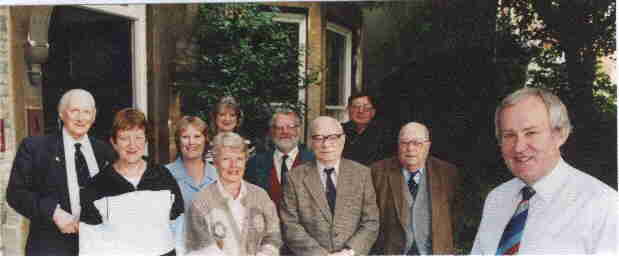
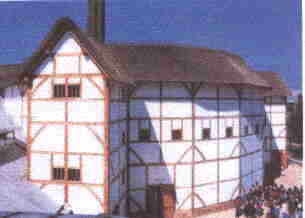
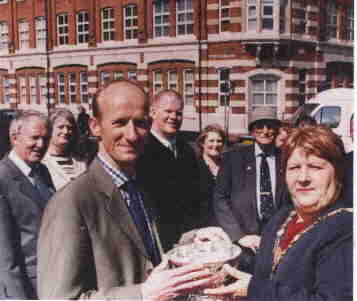 Following last years award of the
Rose Bowl to the Quaker Meeting House in Kettering for demonstrating how simple, good
taste with even the smallest extension can be very pleasing and possibly a model for
others to copy, the 2002 award was made for a large conversion and restoration of an old
factory whose presence in Montague Street is an important landmark.
Following last years award of the
Rose Bowl to the Quaker Meeting House in Kettering for demonstrating how simple, good
taste with even the smallest extension can be very pleasing and possibly a model for
others to copy, the 2002 award was made for a large conversion and restoration of an old
factory whose presence in Montague Street is an important landmark. 